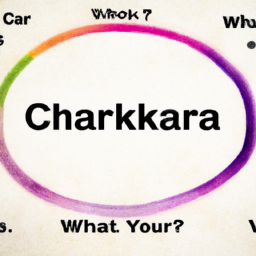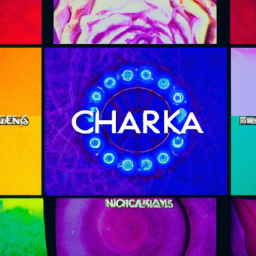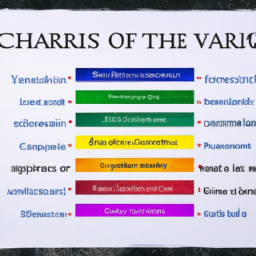Chakras are energy centers located along the spine that are believed to be responsible for our physical, emotional, and spiritual well-being. The word “chakra” is derived from the Sanskrit word meaning “wheel” or “circle”, and each chakra is represented as a spinning wheel of energy. These energy centers are not visible to the naked eye, but they play a crucial role in our overall health and vitality.
In Eastern traditions, there are seven main chakras located along the spinal column, starting from the base of the spine and moving up to the top of the head. Each chakra is associated with a specific color, sound, and element, and they are believed to be connected to different aspects of our body and mind.
Let’s explore what each chakra is associated with and how it affects our well-being.
1. Root Chakra (Muladhara)
The root chakra is situated at the base of the spine and is associated with the color red and the element of Earth. It is connected to our basic needs such as survival, safety, and security. This chakra is also responsible for our sense of grounding, stability, and physical energy.
When the root chakra is balanced, we feel safe and secure in our environment. However, when it is blocked or imbalanced, we may feel anxious, fearful, or disconnected from our body.
2. Sacral Chakra (Svadhisthana)
The sacral chakra is located just below the navel and is associated with the color orange and the element of water. It is connected to our emotions, sensuality, and creativity. This chakra also influences our ability to enjoy pleasure and have healthy relationships.
A balanced sacral chakra allows us to express our emotions freely and experience pleasure. On the other hand, an imbalance in this chakra can lead to feelings of guilt, jealousy, or emotional detachment.
3. Solar Plexus Chakra (Manipura)
The solar plexus chakra is located above the navel and is associated with the color yellow and the element of fire. This chakra is linked to our personal power, self-esteem, and confidence. It also governs our digestive system and metabolism.
A balanced solar plexus chakra gives us the courage to pursue our goals and assert ourselves. However, when it is blocked, we may experience low self-esteem, digestive issues, or lack of motivation.
4. Heart Chakra (Anahata)
The heart chakra is located in the center of the chest and is associated with the color green and the element of air. It is the center of love, compassion, and forgiveness. This chakra also governs our ability to give and receive love, not just towards others but also towards ourselves.
A balanced heart chakra allows us to open our hearts and form meaningful connections with others. But if it is imbalanced, we may struggle with trust issues, lack of self-love, or difficulty in expressing our emotions.
5. Throat Chakra (Vishuddha)
The throat chakra is located in the throat area and is associated with the color blue and the element of sound. It is the center of communication, self-expression, and speaking our truth. This chakra also influences our ability to listen actively and effectively.
A balanced throat chakra allows us to communicate clearly and confidently, while an imbalance in this chakra can manifest as difficulty in expressing ourselves, fear of speaking up, or throat-related health issues.
6. Third Eye Chakra (Ajna)
The third eye chakra is located between the eyebrows and is associated with the color indigo and the element of light. It represents our intuition, perception, and higher consciousness. This chakra is also believed to be the gateway to our inner knowing and spiritual awareness.
A balanced third eye chakra gives us clarity of thought, intuition, and a connection to our higher self. However, an imbalance in this chakra can lead to confusion, lack of direction, and difficulty in making decisions.
7. Crown Chakra (Sahasrara)
The crown chakra is located at the top of the head and is associated with the color violet or white and the element of thought. It is the highest energy center and represents our connection with the divine, universal consciousness, and spiritual enlightenment.
A balanced crown chakra allows us to experience a sense of oneness and spiritual bliss. When it is imbalanced, we may feel disconnected from spirituality, have a lack of purpose, or experience mental health issues.
In conclusion, chakras are associated with various aspects of our physical, emotional, and spiritual well-being. When these energy centers are balanced and in harmony, we can experience a state of wholeness and inner peace. Understanding the chakras and their associations can help us identify any imbalances in our energy system and take steps to restore harmony and balance. So, take some time to explore your chakras and nurture them through practices like yoga, meditation, or energy healing to lead a more fulfilled and balanced life.





This is an interesting topic – I’d love to read more about it. Interesting post! Looking forward to reading more!
Such a fascinating topic – I can’t wait to learn more!
This looks like an interesting read!